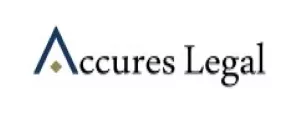Dance is the hidden language of the soul." – Martha Graham
Dance is a unique way to portray emotions without any direct dialogue. From being used as a vehicle for expression, this art form transcends boundaries to reach people's hearts. It can help tell a story, convey feelings and emotions, and connect with others and with the step arrangements, forming unique sequences, costumes, and makeup, to the light setup and overall choreography, dance involves a variety of unique creations that makes one wonder whether such dances are capable of getting IP protection. Especially in an era where trending dance moves or sequences of famous movies or songs are re-performed by social media influencers and tik-tokers, the originality of such performances is questioned and the real owners are left wondering about the protection that they can get legally.
Section 2(h) of the Indian Copyright Act, 1957 defines dramatic work as "any piece of recitation, choreographic work, or entertainment in a dumb show, the scenic arrangements or acting, the form of which is reduced in writing or otherwise, but does not include a cinematographic film." Here, the important point is capable of being reduced to writing. As such, choreography includes the specific arrangement and structurization of certain dance steps and moves coordinated into a new whole sequence performed rhythmically and systematically to a selected song or combination of song and music by trained and skilled performers. Going by this, it can be deduced that dance choreography can be copyrighted provided it is reduced in writing by using a dance notation, and also such dance steps must not fall under the category of a cinematographic film. Further, Section 14 of the Act allows creators to obtain exclusive rights to their work if these conditions are met. In Academy of General Education, Manipal and Ar. V. Malini Mallya, Civil Appeal no. 389 of 2008, the Apex Court ruled that a new form of a ballet called "Yaksha Ranga" namely the creative extension of traditional Yakshagana, falls under the ambit of dramatic work, provided the same must be iterated in literary format to do so.
At the same time, Section 38 of the Act provides for the performer's rights, wherein the person who is performing or appearing in a performance gets the performer's rights in relation to such performances. It would not be right to un-mention the case of Anupama Mohan v. State of Kerala WP(C). No. 22790 of 2015, wherein Anupama Mohan, a renowned Kuchupudi artist, filed a writ petition against the Kerala State Government for allegedly distributing videos of dances performed at the Kerala School Youth Festival to external agencies and earning profits without the consent of the performers and the petitioner herself. Without dwelling greatly on the ownership of the performance, the High Court ruled in favour of the Petitioner.
There several nuances of Intellectual Property that may be applied to this art form. From costumes and ornaments used to be protected under the Designs Act, 2000, the names and their representations under Trademarks Act, 1999 or any innovative methods or devices invented under the Patents Act, 1970, provided the requisites are met as laid down under respective law. For instance, though Michael Jackson's moonwalk dance step is not protected per se, the shoes that gave the illusion of his leaning beyond the centre of gravity are patented.
Conclusion:
To summarize, dances that are not systematic or follow a pattern are not eligible for copyright protection. Similarly, a social dance, discrete dance movements, simple dance routines, ordinary motor activities, or physical skills cannot get copyright protection. Though the dance itself cannot benefit from other IP protections, different IP rights can be obtained for the various methods, names, and unique elements involved.
The content of this article is intended to provide a general guide to the subject matter. Specialist advice should be sought about your specific circumstances.


